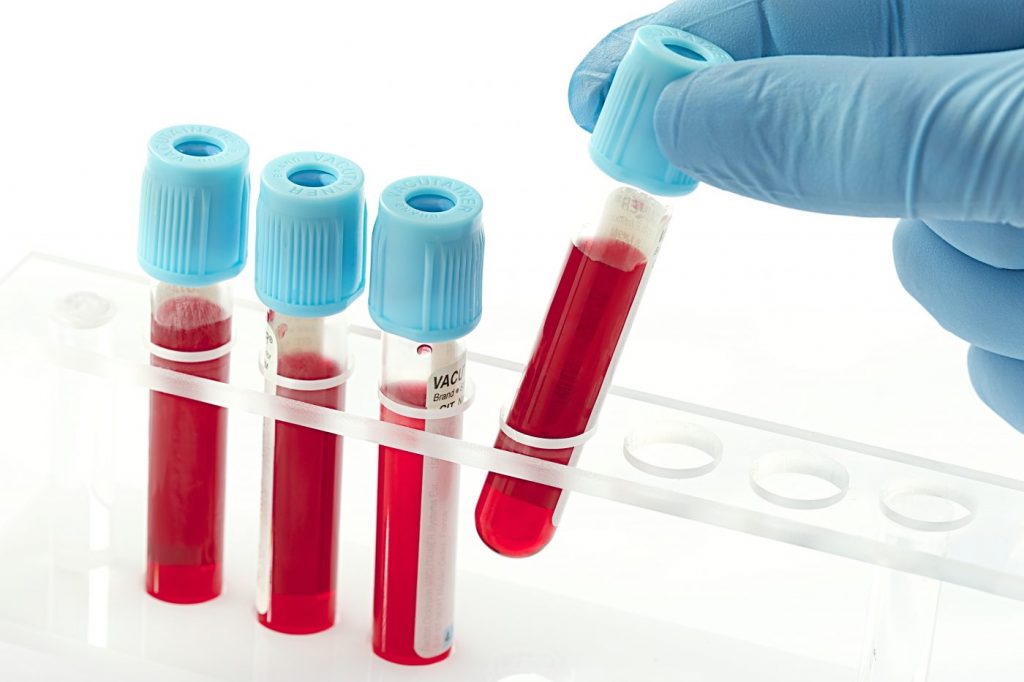Neurofilaments May Not Be Biomarker for Older Patients

The blood levels of neurofilaments — a marker of nerve cell damage — may serve as a disease onset and treatment response biomarker in infants with spinal muscular atrophy (SMA) type 1, but not in older patients with milder disease forms, a study suggests.
These findings add to previous studies highlighting the absence of major differences in neurofilaments blood levels between older SMA patients and age-matched healthy individuals, and before and after treatment with Biogen’s Spinraza (nusinersen) in older patients.
Together, the data suggest the need to find additional biomarkers for this older subset of patients. Still, more studies are needed to confirm these findings, the researchers noted.
The study, “The altered expression of neurofilament in mouse models and patients with spinal muscular atrophy,” was published in the journal Annals of Clinical and Translational Neurology.
Neurofilaments are major structural proteins of neurons, consisting of three subunits: heavy, intermediate, and light chains. When nerve cell fibers are damaged and neurons die, neurofilaments are released into the cerebrospinal fluid — the liquid that surrounds the brain and spinal cord — and detected in the bloodstream.
As such, neurofilament levels in blood and cerebrospinal fluid “have therefore been used as biomarkers for [nerve fiber] injury, degeneration and neuronal loss in a number of neurodegenerative conditions, including SMA,” the researchers wrote.
Previous studies have shown that infants with SMA type 1, a severe form of the disease, have significantly higher-than-normal blood levels of phosphorylated neurofilament heavy chain (pNF-H) and that these levels are linked to disease severity and are reduced upon treatment with Spinraza.
While these findings suggest that blood pNF-H levels “are a promising biomarker for disease activity and response to [Spinraza] treatment,” the team wrote, contrasting evidence has been found for older SMA patients and those with milder disease forms, such as types 2 or 3, who have longer life expectancies.
Notably, this may be related to the previously reported progressive drop in pNF-H levels with age in both untreated SMA patients and healthy individuals.
To better understand neurofilaments’ potential as a biomarker in SMA, researchers at University College London, in the U.K., analyzed neurofilaments levels in mouse models of SMA and in children with the neuromuscular disease.
Mouse models included those of types 1 and 3 disease (types 1 and 3 mice), and were compared with non-affected mice (used as controls). A total of 11 children, 3–14 years, with SMA types 2 or 3 who had received no prior treatment, were included, as well as eight healthy children, ages 4–8 years, for comparisons.
The effects of a molecule similar to Spinraza also were assessed in the mouse model of SMA type 1.
Results showed that type 1 mice had significantly higher blood levels of different forms of neurofilament heavy chain (NF-H) in both the early (day 5) and late symptomatic (day 10) stages of the disease, compared with control mice.
In the mouse model of type 3 disease, similar differences to control mice were observed only at day 20 — the early symptomatic stage in this mouse model.
These data suggest that blood NF-H levels “are altered at the early symptomatic stages in both the severe SMA‐I and the mild SMA‐III mice, and may therefore be a useful biomarker in SMA‐I and ‐III mice at the early disease stage,” the researchers wrote.
In addition, type 1 mice treated with a compound similar to Spinraza showed only a temporary reduction in blood levels of NF-H, despite sustained improvements in survival and motor function.
When the team evaluated changes in blood NF-H levels over time, they found a more than 90% drop both in the mouse model of SMA type 3 and control mice and a 68% reduction in treated type 1 mice at day 20.
In line with previous reports and an age-dependent reduction in blood NF-H levels, older, untreated SMA type 2 and 3 patients did not have significantly higher levels of NF-H relative to age-matched healthy children.
In fact, a slight but significant level drop was observed, although it was not associated with changes in patients’ motor function, as assessed with the Hammersmith Functional Motor Scale score.
These lower blood NF-H levels in older SMA patients likely reflect the lower number of remaining motor neurons and provide “further evidence for the limitation of the NfH protein as a biomarker for disease progression in older SMA patients,” the researchers wrote.
This highlights “the need to continue to pursue additional biomarkers for this group of patients,” they added.
Besides showing that blood NF-H levels are informative in indicating disease onset and treatment response in mouse models of SMA, the study provided further insight on neurofilament changes over time “that needs to be taken into account to distinguish this from the response to … treatment,” the researchers concluded.
The study was funded by the National Institute for Health Research, SMA Europe, and Wellcome Trust.
The post Neurofilaments May Not Be Biomarker for Older Patients appeared first on SMA News Today.

